
Think Again: Are Education Programs for High Achievers Inherently Inequitable?
This brief challenges the notion that marginalized students of high ability are harmed by advanced education, with implications for better screening measures and expansion of programs.
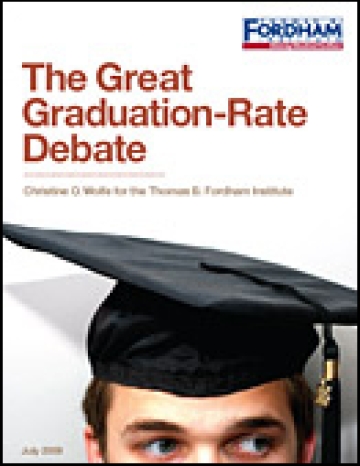
The Great Graduation-Rate Debate
This paper aims to promote a clearer understanding of the graduation-rate debate by distilling the policy developments and controversy surrounding the measurement of these rate. Why are there so many different ways to calculate graduation rates? How do these different rates account for the multiple pathways to graduation? What are the data sources used in the various dropout-rate calculations, and what are their pros and cons?
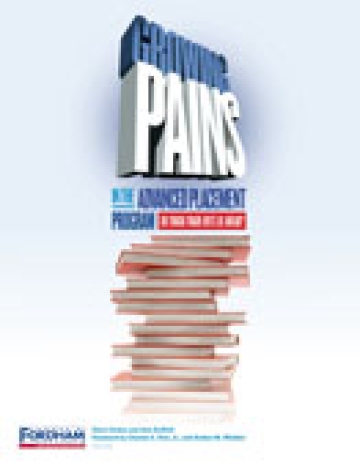
Growing Pains in the Advanced Placement Program: Do Tough Trade-Offs Lie Ahead?
Over the past five years, the number of students taking at least one Advanced Placement exam rose by more than half. This news is celebrated but is there a downside? To find out, Fordham commissioned the Farkas Duffett Research Group to survey AP teachers in the US. The AP program remains popular with its teachers. But there are signs that the move toward "open door" access to AP is starting to cause concern.
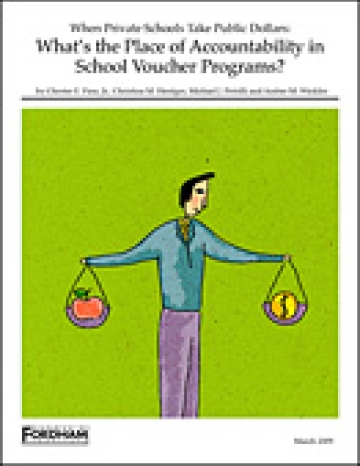
When Private Schools Take Public Dollars: What's the Place of Accountability in School Voucher Programs?
Voucher opponents often argue that it's unfair to hold public schools accountable for results under the No Child Left Behind Act and various state rules while allowing private schools that participate in school voucher programs to receive taxpayer dollars without similar accountability. In pursuit of a reasonable middle ground, we sought the advice of twenty experts in the school-choice world. This paper presents their thoughts and opinions, as well as Fordham's own ideas.
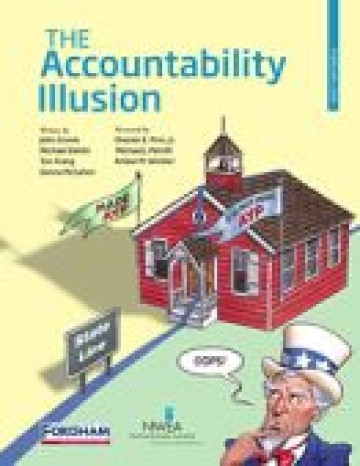
The Accountability Illusion
In this study of the No Child Left Behind Act system and Adequate Yearly Progress (AYP) rules for 28 states, we selected 36 real schools that vary by size, achievement, diversity, etc. and determined which ones would or would not make AYP when evaluated under each state's accountability rules. If a school that made AYP in Washington were relocated to Ohio, would it still make AYP?
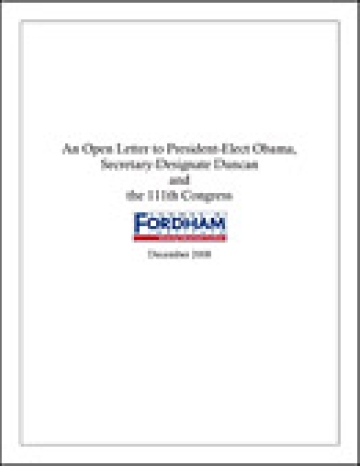
An Open Letter to President Obama, Secretary Duncan and the 111th Congress
In this exciting, unique and challenging time, the Thomas B. Fordham Institute wants to congratulate President-Elect Obama and other new federal leaders. The federal government has a key role to play in creating a world-class education system in America but it's challenging to get that role right. This letter provides some guidance. Fordham experts review the current education policy landscape and its main players and offer their view of the ideal K-12 federal role. They also address the ten big policy battles looming on the horizon. The hope is that the letter will provide critical advice, insights and ideas for the new federal education leaders who are about to take on a big job.
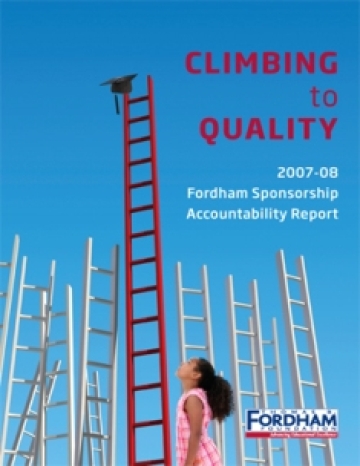
Climbing to Quality 2007-2008 Fordham Sponsorship Accountability Report
This yearly report covers Fordham's sponsorship practices throughout the year as well as newsworthy events related to our sponsored charter schools. You can also find detailed reports on all of Fordham-sponsored schools. Each school report contains information on the school's academic performance, educational philosophy, and compliance for the 2007-2008 school year.
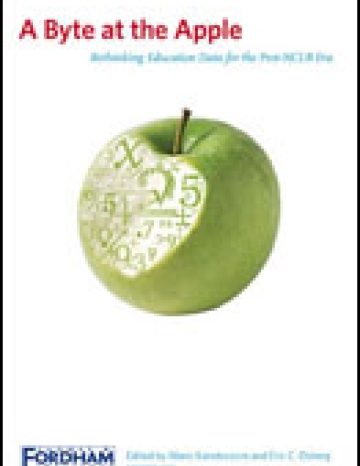
A Byte at the Apple: Rethinking Education Data for the Post-NCLB Era
In A Byte at the Apple, leaders and scholars map the landscape of education data providers and users and explore why what's supplied by the former often fails to meet the needs of the latter. Most important, it explores potential solutions--including a system where a "backpack" of achievement information accompanies every student from place to place.
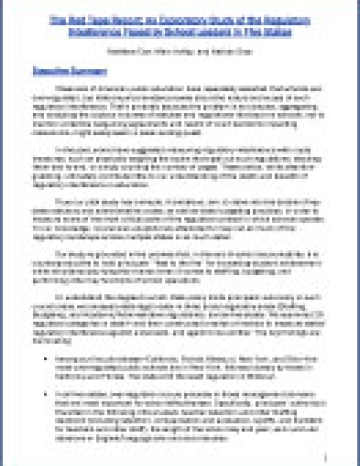
The Red Tape Report: An Exploratory Study of the Regulatory Interference Faced by School Leaders in Five States
In public education today, individual schools are accountable under the federal No Child Left Behind Act as well as myriad state and local policy regimens for their students achievement and other vital outcomes. Increasingly, school leaders find their own job tenure and compensation tied to those outcomes as well. But do they possess the authority they need to lead their schools to heightened performance? Numerous surveys (conducted by Public Agenda, the Thomas B. Fordham Institute, and others) suggest that many school leaders feel they do not. Thus an important public policy question arises: what factors help or hinder school leaders in exercising their authority and in which areas?
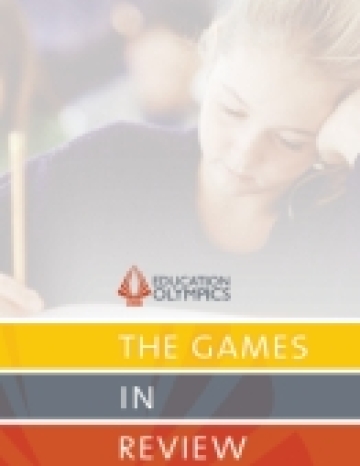
Education Olympics 2008: The Games in Review
This report has a simple aim: to present results from international assessments so readers can judge for themselves how American students stack up globally. It shows how the U.S. has performed internationally in education in recent years, and it provides a glimpse of how education looks in several top-performing nations.

Sweating the Small Stuff: Inner-City Schools and the New Paternalism
The most exciting innovation in education policy in the last decade is the emergence of highly effective schools in our nation's inner cities, schools where disadvantaged teens make big gains in academic achievement. In this book, David Whitman takes readers inside six of these secondary schools—many of them charter schools—and reveals the secret to their success: They are paternalistic.
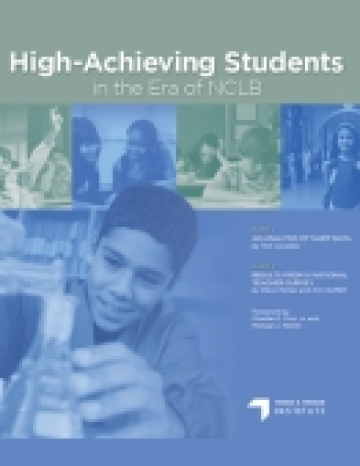
High-Achieving Students in the Era of No Child Left Behind
This publication reports the results of the first two (of five) studies of a multifaceted research investigation of the state of high-achieving students in the No Child Left Behind (NCLB) era. Part I examines achievement trends for high-achieving students since the early 1990s; Part II reports on teachers' own views of how schools are serving high-achieving pupils in the NCLB era.
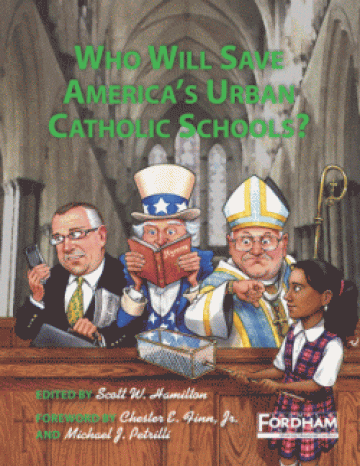
Who Will Save America's Urban Catholic Schools?
America's urban Catholic schools are in crisis. Over 1,300 of them have shut down since 1990, mostly in our cities. As a result, some 300,000 students have been displaced--double the number affected by Hurricanes Rita and Katrina. This report, which includes a comprehensive survey of the attitudes of U.S. Catholics and the broader public towards inner-city Catholic schools, examines this crisis and offers several suggestions for arresting and perhaps reversing this trend in the interests of better education.